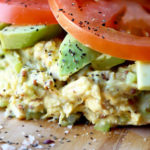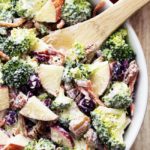By Shelby Stoner, MS, PHASE IV Exercise Physiologist
In the honor of a new decade, I decided to do research on what some of the top 10 superfoods of 2023 will be. Here’s what I found:
- Cloves
Cloves are an Indonesian spice and the world’s strongest antioxidant. Cloves can be crushed and added to your smoothies, coffee, chutney, or tea! Since cloves have a pungent taste, it is recommended to combine them with other anti-inflammatory spices such as cinnamon and ginger. This spice is famous for its anti-inflammatory, soothing, and antiseptic properties!
Recipe: Citrus Clove Spiced Coffee from Food.com
2. Blackberries
Some of the proposed benefits of blackberries include aiding in digestive health, immune defense, cancer prevention, and improved heart health due to their richness of Vitamin C and fiber. With their dark blue color, blackberries have one of the highest antioxidant levels of fruits! Blackberries are also low in calories and carbohydrates, making them very popular in low carb diets!
Recipe: Berry Beet Salad with Walnuts
3. Chia Seeds
Chia seeds offer several components that may help prevent the development of many chronic diseases. For starters, they are high in omega-3 fatty acids which have shown to have a beneficial effect on cardiovascular health through lowering cholesterol, regulating blood pressure, and decreasing inflammation. In addition to fatty acids, chia seeds contain fiber that aids in digestion and help prevent blood sugar spikes after a meal and promote a feeling of fullness.
Recipe: Choc-O-Lot Chia Pudding
4. Nutritional Yeast
Unlike activated yeast that is used for making bread, nutritional yeast comes from deactivated yeast that has been heated and dried, and often comes in a flaky form. Nutritional yeast serves as a popular substitution for cheese or anyone looking to cut down calories and animal fats. It is especially prevalent in vegan diets as it is a great source of many B vitamins and low in sodium. Rather than dousing your Caesar salad or pasta in parmesan cheese, try throwing some nutritional yeast on instead!
Recipe: Creamy Nutritional Yeast Dressing from Eatingbirdfood.com
5. Sorghum
You may have also heard of this superfood as great millet, Indian millet, milo, durra, or shallu. Sorghum is a great alternative for processed white rice, as it is one of the most nutritious grains available and naturally gluten free! It also contains most antioxidants and can also be ground up into a fine powder and used as flour for baking – score!
Recipe: Moroccan Sorghum Salad from Begoodorganics.com
6. Kale
I’m sure this one doesn’t come as much as a surprise to most people. Kale has grown in popularity in recent years and is here to stay. Not only is kale a great anti-inflammatory food, it helps strengthen the immune system and boost metabolism! Kale contains iron, omega-3, fiber, and vitamins A, C and K as well as important antioxidants. In addition, next time you’re looking for a calcium boost, skip the milk and make a hearty kale salad or soup instead!
Recipe: Farro, Kale and Squash Salad
7. Fermented Foods
Ever heard of Kombucha? Fermentation is the ancient technique of preserving food, which is still used today to produce foods like wine, cheese, sauerkraut, yogurt, and kombucha of course! This not only helps boosts the food’s shelf life, but can also give your body many healthy probiotics, aka the live microorganisms crucial to healthy digestion according to Dr. David Ludwig, a professor of nutrition at the Harvard School of Public Health.
Recipes: Fermented Apples, How to Make Kimchi
8. Avocado
Avocados are arguably one of the most nutrient dense foods you could add to your diet. They are full of healthy fats, protein, and fiber! If you wanted even MORE from an avocado, you can eat the seed too! Start by cutting the seed in half and then cut it again, and throw the chunks into the blender for your smoothies. The seed contains most of the avocado’s antioxidants and some healthy oils too.
Recipes: Avocado, Cucumber, Corn, Black Bean, and Tomato Salad, Chocolate Avocado Pudding
9. Matcha
Matcha is the finely ground powder that comes from green tea leaves. Rather than brewing green tea from immersing the whole leaf into hot water, with matcha you are actually consuming the green tea leaf itself, making the drink much more caffeine-potent. Many coffee drinkers are switching from their normal cup of joe to matcha for greater caffeination as well as some health benefits matcha has to offer as well. Matcha is rich in antioxidants called polyphenols which are known to help reduce the risk of developing certain diseases and cancers.
10. Turmeric:
Turmeric is well known for its anti-inflammatory properties and can be found in both fresh and powder forms. It naturally inhibits the COX-2 gene, which promotes inflammation in the body. Incorporating turmeric into your diet is a great nontoxic way to inhibit this inflammatory gene with no side effects.
Recipes: Turmeric Yellow Rice, Turmeric Spiced Tuna Salad, Ginger and Turmeric Spiced Carrot Soup
NUTRITIONAL SUPPORT
Remember, each individual’s dietary needs are unique to the individual. While changing the way you look at food sounds simple, many need more guidance and support. For more information on weight loss, improving metabolism, or anti-inflammatory diets, schedule your FREE Nutrition consultation today by calling (310) 582-8212 or email Shelby directly at shelby@phase-iv.net.







